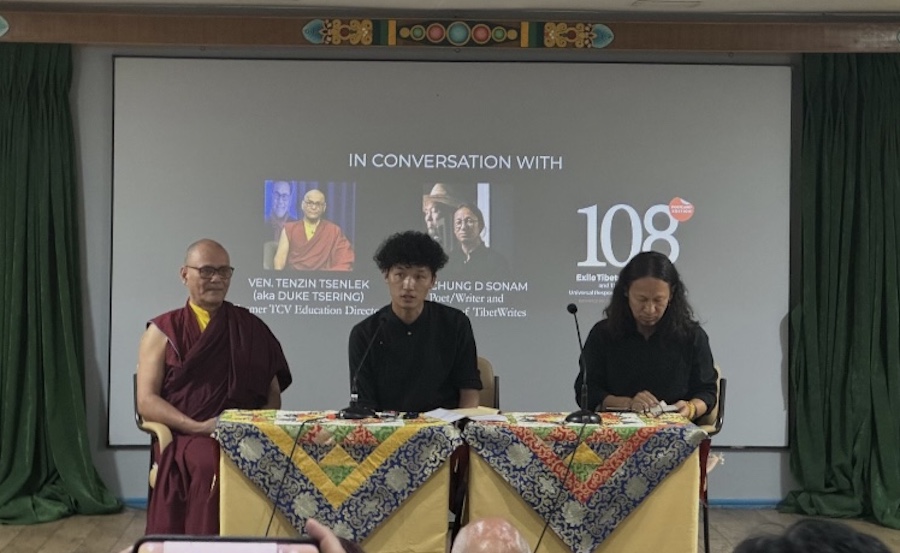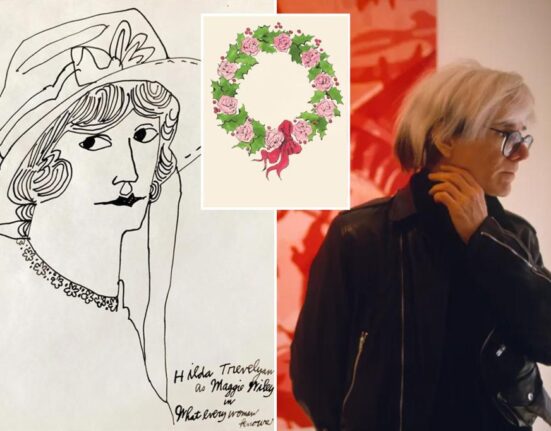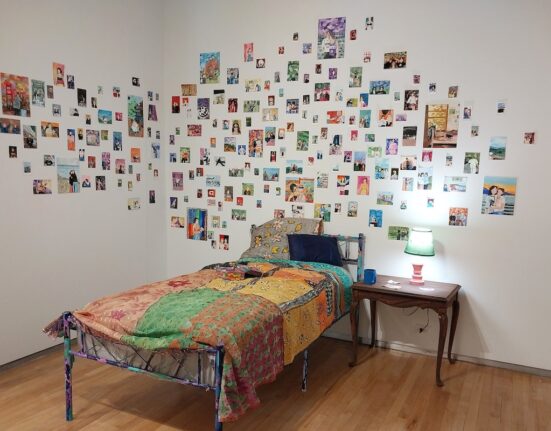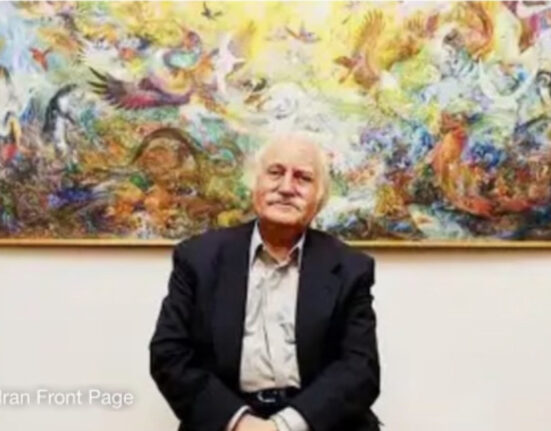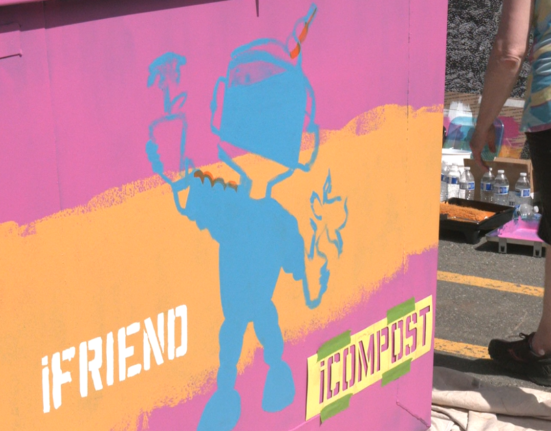By Tenzin Nyidon
DHARAMSHALA, July 3: Whiteline Graphics, an initiative by Jamyang Tenzin and his brother Tsering Namgyal, launched the first-ever meticulously curated book titled “108 Exile Tibetan Visual Artists and Their Expression of Universal Responsibility and The Environment.” This unique project celebrated the rich tapestry of Tibetan art and culture in exile. Through this initiative, Jamyang showcased unique artworks of 108 incredible talents that boast of diversity and inclusiveness within the Tibetan art community.
A panel discussion featured Ven. Tenzin Tselek, a former TCV Education Director; Bhuchung D. Sonam, a writer, poet, and co-founder of Tibetwrites; and was attended by Geshe Lhakdor, Director of the Library of Tibetan Works and Archives. During the discussions, Ven. Tselek, who also served as the Principal of TCV Selakui, emphasised the importance of prioritising the foundations of the arts in schools.
Bhuchung D. Sonam urged the audience to respect and support artists, highlighting the lack of recognition they receive. He referenced an editorial from Amnye Machen’s magazine, Lungtah, which noted that traditionally, artists in Tibet, including dancers and singers, are often viewed unfavourably. He also discussed Drubchen Thangtong Gyalpo, who pioneered Tibetan opera in the 15th century.
Despite his significant contributions, historical records and biographies seldom acknowledged him as the founder of Tibetan opera. Nowadays, his contributions are verbally recognised, as demonstrated during Tibetan Institute of Performing Arts’ Opera Festival, where homage is duly paid to Thangtong Gyalpo. Bhuchung also shared personal anecdotes, recounting how his parents would disparagingly refer to singers as “beggars” during the harvest festival, where these performers would sing songs.
“The purpose of including 108 artists’ works holds symbolic significance,” Jamyang told Phayul. “There are numerous ways to interpret this number. In Buddhism, we believe that 108 steps are required to reach Nirvana, and the Tibetan rosary typically consists of 108 beads. While there isn’t a definitive reason for choosing 108, it is considered an auspicious number. Based on this symbolism, I curated the artworks of 108 Tibetan artists in exile. Although I had a list of around 270 visual artists, I could only contact 108.”
Discussing the process of compiling the artworks, Jamyang mentioned facing challenges in reaching senior artists due to their lack of social media presence, which required considerable effort to contact them. With younger artists, transparency was a concern, as they wanted assurance that their artworks would not be used for commercial purposes.
Jamyang reported that the response from most artists has been positive. He explained that his inspiration for creating this book was to unite the artistic efforts of 108 exiled Tibetan visual artists, each contributing a piece that reflects their unique perspective.

